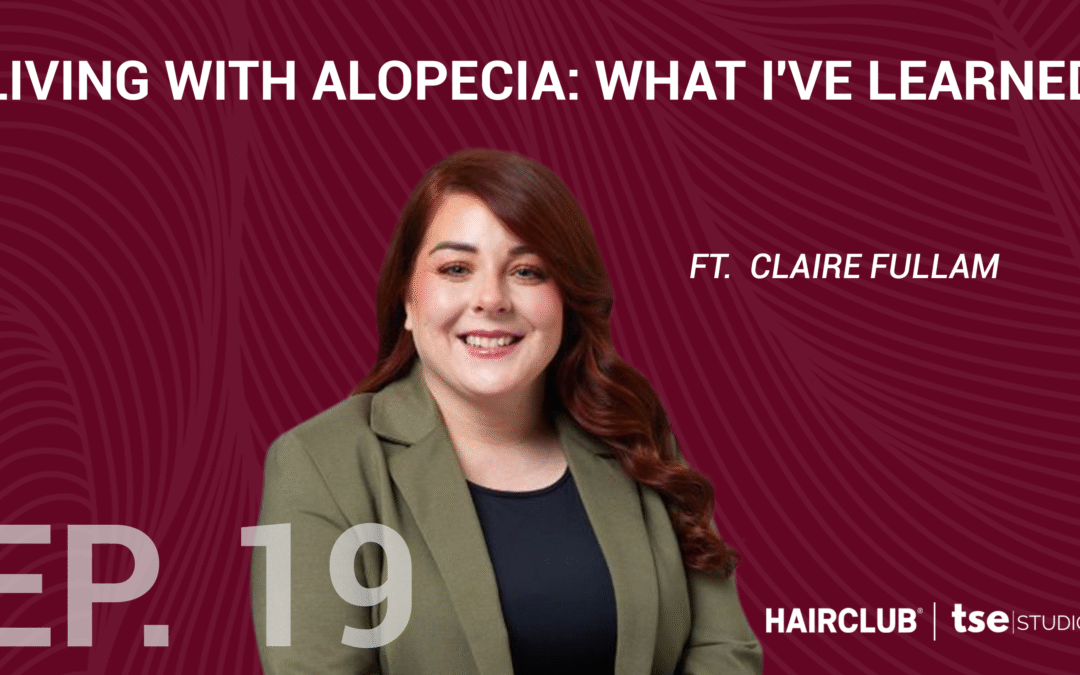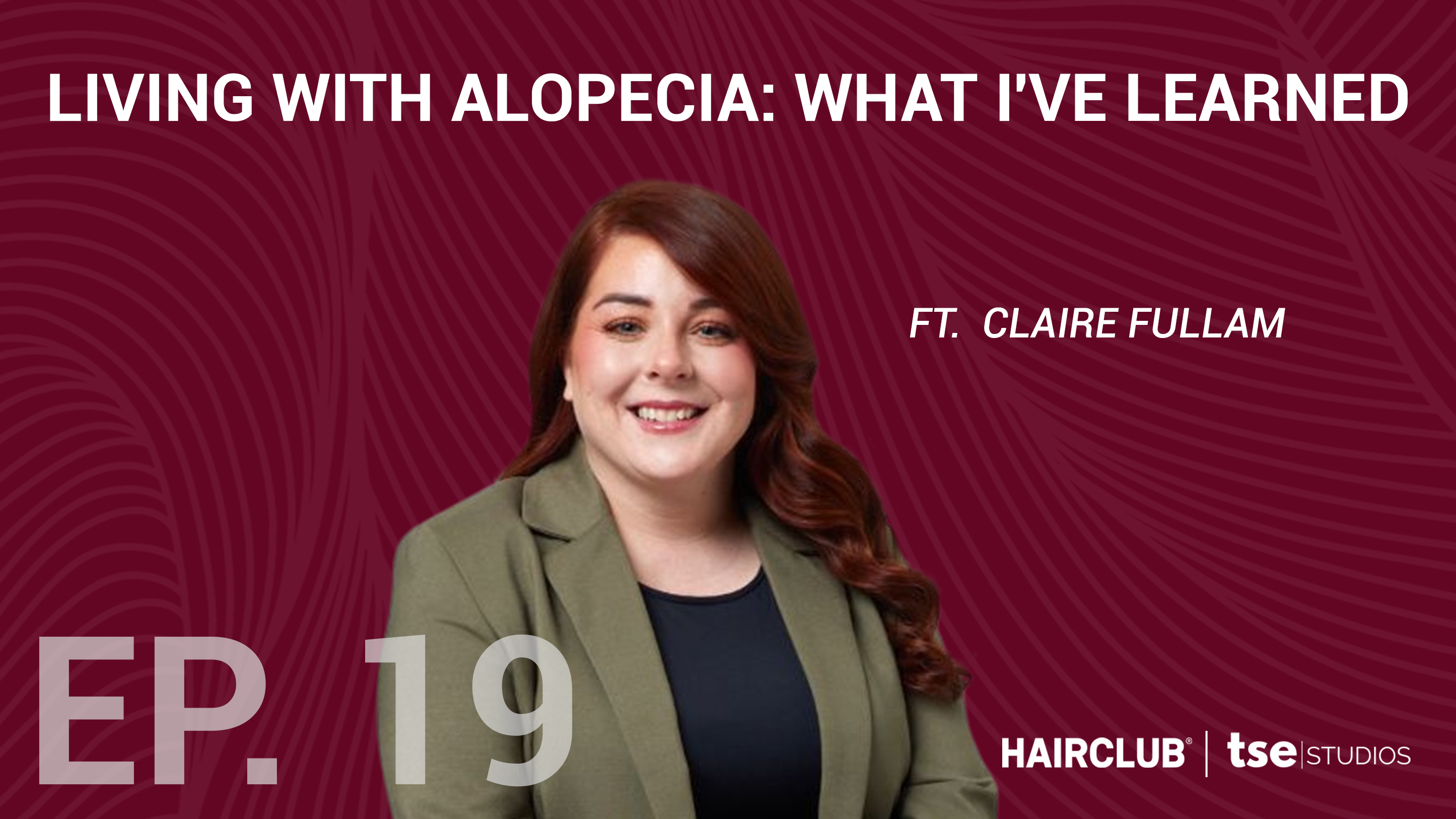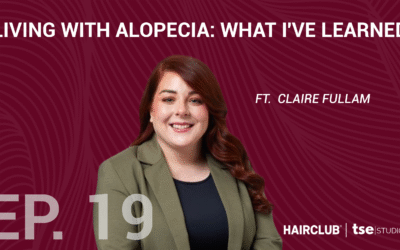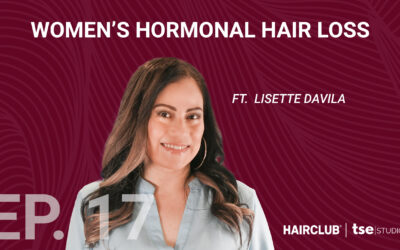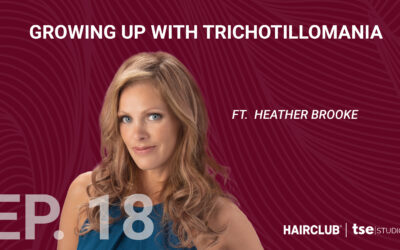HairClub stylist Rachel Rivera shares expert tips on caring for hair systems, scalp health, and avoiding damage from styling products in this helpful episode.

Importance of Early Hair Loss Detection
Episode 22
Importance of Early Hair Loss Detection

If you are starting to wonder if you should be concerned about your hair loss, this episode will give you some helpful insights into identifying hair loss early on and what you can do about it. In this episode of HairPod, our host Kevin Rolston delves into the early indicators of hair loss. Highlighting personal experiences and expert insights, Kevin discusses how subtle changes in hairline, volume, and scalp visibility can signal the onset of hair loss. Emphasizing the importance of early detection, he encourages listeners to take action to preserve hair health by exploring effective treatment options and professional advice early on.
Indicators and Methods for Monitoring: Finding the Best Hair Treatment for Hair Loss
Hair loss can greatly impact our lives and feelings of self-confidence, knowing what to look for early on can help those dealing with hair loss to have a plan, enabling them to address hair loss head-on. Offering practical advice, Kevin discusses strategies for managing hair loss effectively. From comparing photographs to monitoring shedding, changes in texture, and scalp health, he guides listeners in identifying the earliest signs of hair loss. By discussing advancements in hair loss treatments and technologies, Kevin inspires hope and optimism for those seeking solutions tailored to their specific needs.
Seeking Hair Loss Treatments Early On: Is It Time to See a Trichologist?
Kevin shares personal reflections and insights on the emotional aspects of experiencing hair loss while also offering specific examples of what hair loss looks like in the earlier stages. Drawing from his journey and those of previous HairPod guests, he explores the insecurities and challenges individuals often face when they begin confronting hair loss. By normalizing these feelings and discussing ways to seek support, Kevin aims to empower listeners to address their concerns openly and seek professional guidance with confidence.
Know Your Options: Hair Restoration, Hair Transplants, Hair Loss Therapy
Being aware of the early indicators of hair loss allows those experiencing it to find a suitable solution or discover an underlying health issue, ideally allowing them to restore their hair and their confidence without years of painstaking self-questioning and solution seeking! Kevin emphasizes the importance of community and support for individuals navigating hair loss. He encourages listeners to engage with HairPod’s platform and social media channels to continue the conversation, share experiences, and access valuable resources. By fostering a supportive environment, Kevin aims to empower listeners to take proactive steps toward managing their hair loss journey.
Empowering Resources
As the episode draws to a close, HairPod extends a generous offer of a complimentary hair loss consultation, providing a tangible step towards reclaiming confidence and control over one’s appearance. Book a Free consultation with HairClub Today!
Thanks for listening to HairPod. We hope you enjoyed this episode. If you did, please leave us a rating or review wherever you get your podcasts. If you’d like to connect with us on social media to share your story, check us out on Instagram @HairClub. HairPod is a production of TSE Studios. Our theme music is from SoundStripe.
Episode.22 Transcript
Kevin Rolston [00:00:04]:
A lot of feelings naturally come up when we face hair loss, and many are resistant to openly acknowledging it from the beginning. One thing that seems consistent across the board for most people is how hair loss impacts them emotionally. And I know that as well as anyone. When I went through it myself, I didn’t want to be baldem. Welcome to Hairpod, the podcast where you get to hear real people talk about their hair journeys. I’m your host, Kevin Ralston, and each week I get to interview people from different walks of life whose lives have been touched by hair loss in some form or fashion. Many of our guests have experienced hair loss themselves and found a way to get their confidence and their hair back. For this week’s episode, I want to do something a little bit different.
Kevin Rolston [00:01:01]:
We’ve talked about so many unique hair stories and heard about how our guests have dealt with that initial period of hair loss. Some went into denial, others panicked, and some retreated into their shell. Some people, like me, started trying every solution we could think of, trying to find the one that works best for our situations. Today, I want to talk to you about the early signs of hair loss, because as different as our stories are, I think one thing a lot of our guests have in common is that they wish they acted upon their hair loss a lot sooner. Many people spend so much time in that stage of hair loss where they think they’re just experiencing normal daily shedding and end up letting their hair loss get so aggressive that they lose more hair than they actually needed to. Today, I want to empower you to take action in the early stages of hair loss, because it’s not always a lost cause of. Sometimes people can slow it down dramatically, and some even experience regrowth. So let’s dive into some important indicators that might be able to tell you if you’re losing more hair than you’re regrowing.
Kevin Rolston [00:02:09]:
So let’s get right into it. The first thing you’re going to want to look for are changes in your hairline. These changes can happen slowly over time, so they can really sneak up on you. For men, the frontal hairline is usually the first to change. Women, on the other hand, might start to notice hair loss. Overall, the steady transition to an m or v shape along the hairline is quite common with aging and is a clear sign of hair loss. Your hairline might already have this shape, but if it starts to become more prominent, it is evidence that your hairline is receding. Believe it or not, I first noticed my hair loss in a picture somebody took of me, and it was quite a shock, let me tell you.
Kevin Rolston [00:02:50]:
Even though I knew I was going to go bald eventually from seeing pictures of my dad and grandfather all throughout my childhood, I still wasn’t really monitoring whether I was losing my hair at the time. If I had been, I probably would have noticed sooner. For me, it was a bald spot right in the back middle part of my head, and there was no questioning the evidence. I was definitely balding. It was horrifying. Now, it’s not always obvious, but you might be starting to notice a loss of volume and thickness in photos, just like me. But don’t panic. Just because you’re experiencing hair loss now doesn’t mean you’ll continue to.
Kevin Rolston [00:03:26]:
Plus, if you do continue to lose hair, the options for treatment and the technologies available for those experiencing hair loss are only getting better as time goes on. Plus, if you do continue to lose hair, the options for treatment and the technologies available for those experiencing hair loss are only getting better as time goes on. Because hair loss can sometimes be very gradual, it can be hard to tell if you’re losing hair or just imagining it. Comparing new and older photos is a great way to actually figure out if you’re noticeably losing hair. If you want to be more scientific about it lighting, make sure your hair is dry. And remember, lighting is key because fluorescent lighting or wet hair can make your hair look thinner than it really is. If two photos taken several months to a year apart show significant differences in hair volume, there’s a pretty good chance that you’re experiencing hair loss. Another early sign to watch for is excessive shedding.
Kevin Rolston [00:04:25]:
Shedding is normal, and it’s estimated that we lose around 50 to 100 hairs a day on average. But if you’re noticing more hair than usual in your tub or shower, it might be time to take a little bit of a closer look. You can check your shower drain and hairbrush regularly to gauge the amount of hair you’re losing. Now, keep in mind that if you have long hair, it’s easier to see the shed strands, which can make it seem like you’re losing more hair than you actually are. However, if the amount of hair you find continues to increase, then you’re losing more hair than you’re regrowing, and it might be time to look to seek professional guidance from your doctor or a hair specialist. If you’re someone who styles your hair the same way on a regular basis, and you’re starting to notice that styling your hair is becoming increasingly difficult, this could be yet another early sign of hair loss. Now, just because you have one bad hair a day. It doesnt necessarily mean that your hair is thinning, but if your go to hairstyle isnt looking quite the same, or if its just taking more time and product to achieve the same look, it might be worth taking a look at your scalp health.
Kevin Rolston [00:05:29]:
You can compare your current styling efforts with past experiences to see if its your methods or your hair thats actually changing. If you have a long term hairstylist, you can actually ask them if theyve noticed any changes. Often they have a pretty keen eye for subtle differences in hair thickness and volume. Scalp visibility is probably the main indicator for most people. If you tilt your head down or you use a handheld mirror to check the top of your head, you might notice more scalp showing through your hair. Now this is true for men and women and is a common early indication of hair thinning or the beginnings of a bald spot. More scalp visibility can suggest a general thinning of the hair or specific areas where hair loss is more pronounced. If you’re getting sunburns on your scalp more frequently or noticing your part getting wider and wider, it is a clear sign that you are starting to lose some hair.
Kevin Rolston [00:06:28]:
It’s important to remember that signs of hair loss can vary greatly depending upon the type and the cause. Aging, hormonal change and autoimmune conditions such as alopecia areata can cause hair loss. And in each instance, hair loss is going to look a little bit different. Again, dont panic. Just because youre experiencing hair loss now doesnt mean youll continue to. Plus, if you do continue to lose hair, the options for treatment and the technologies available for those experiencing hair loss are only getting better as time goes on. A lot of feelings naturally come up when we face hair loss, and many are resistant to openly acknowledging it from the beginning. One thing that seems consistent across the board for most people is how hair loss impacts them emotionally.
Kevin Rolston [00:07:17]:
And I know that as well as anyone. When I went through it myself, I didn’t want to be bald. It’s totally normal to feel insecure about bringing up your hair loss to anyone else, whether it’s a trusted friend or a professional in the industry. The great thing about recognizing signs early on is that you can look for solutions and connect with knowledgeable people to figure out what’s right for you. If you seek help from a trusted professional, you may discover that your hair loss can be slowed down or even reversed. And even if that’s not in the cards for you, there are probably more options out there than you’re even aware of. Spotting hair loss early allows you to seek advice from a doctor to rule out medical concerns and a hair specialist to come up with a plan. Maybe your hair loss is from aging, or maybe it’s an underlying condition or deficiency.
Kevin Rolston [00:08:06]:
Whatever the cause may be, the first step towards a solution is accepting that you are losing your hair. And once you’ve done that, you can get the help you need and get on track to getting your hair back. Thanks for listening to another episode of Hairpod. Check us out at Hair Club on Instagram or search Hairpod on Facebook to continue the conversation. If you know someone who could benefit from hearing this episode, we would love it if you would share it with them. If you’re enjoying the show, consider leaving us a rating and review on Apple Podcasts or your favorite podcast app. We also have a website. Check it out by going to podcast dot hairclub.com.
Kevin Rolston [00:08:47]:
we’re here to build people up and share real stories so people experiencing hair loss feel a little bit less alone. And when you share, review, and subscribe, it helps us do just that. So thank you. Until next time.
Featured Guests
New Episodes Weekly
Available Every Tuesday @ 9am
Want to Be a Guest?
Related Episodes
Hair System Care Vs. Regular Hair Care
Fitness, Supplements, and Hair Loss: What You Need to Know
Can your fitness routine lead to hair loss? HairPod explores the impact of supplements, testosterone, and stress on hair health this spring.










